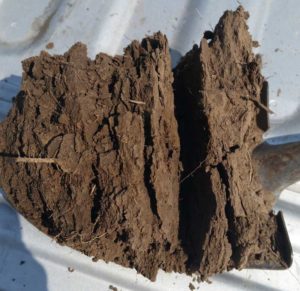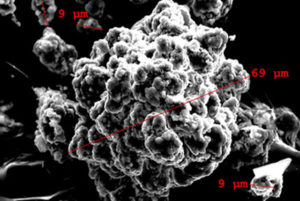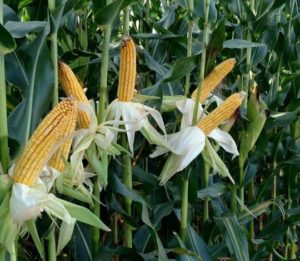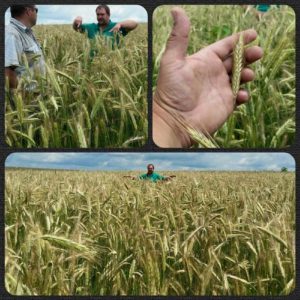Guidelines to the DTA Program
DTA Soil Microbial Structure Guide

Click here to download these guidelines as a pdf document.
Start with a Soil Test (30-40 Acre Composite Grids)
- Soil test for the following: Organic Matter, CEC, P1, P2, K, Mg, Ca, Na, pH & S
- Also test for base Saturations of K, Mg, Ca, H & Na
- TKN Nitrogen test for Ammonium N and Organic N
- Chloride test to determine if compaction exists or may exist
- Run PT2 test on several samples to determine true mineral levels.
- Soil Health (Haney Test) should be run (Mid July – Mid Aug) to monitor progress on the program.
- Run these tests at a minimum of 3year intervals
Monitor Acidity (Skip if Organic Matter is 4% or above and Hydrogen levels are below 2%)
Chemically, pH is an accurate assessment of acidity. It, by itself, isn’t a good way to monitor acidity biologically. We will look at the pH:CEC Ratio. Ratios between .4 – .5 are conducive to microbial life. Living Carbon and your soil will achieve optimum performance within this range. The formula is:
pH:CEC Ratio = pH/CEC + ( (OM – 2) /100) )
Correct Acidity/Combat High Hydrogen Levels
If we are below a .4 on the pH:CEC ratio one of several things needs to happen.
- Do one of the following:
- Apply 1000# /acre of hi calcium low magnesium ag lime for two consecutive years
- Grow a spring cover crop which produces CO2 (natural buffer).
- Apply 2-4 ton of dry manure. Dry manure creates carbonic acid (liquid manure doesn’t serve as a buffer as it contains high levels of hydrogen).
- Retest year 3 and monitor progress.
- Apply in furrow with the planter, protected forms of slow release potassium like Sure-K, Kalibrate or Power NK (available from Agro Liquid and Sure Crop fertilizers)
- Check soil for undigested residue, especially in high organic matter soils, as it may be contributing to the elevated hydrogen and chloride as well as the low soil ph.
Correct Magnesium

Soils with magnesium above 17% base saturation are generally tight and compact easily. We have seen a benefit of applying Gypsoil.
- Apply 1-ton Gypsoil for two consecutive years. Approved for conventional acres only.
- Retest year 3 and monitor progress.
On organic production:
- Use Sulfur through Calcite Turbo Organic w/Sulfur and Organic Living Carbon w/Sulfur
- Be prepared to do fall sub soiling.
Address Compaction
Chloride is an indication of how well water is percolating through the soil. Monitor chloride levels to help determine where compaction located:
- 0-5 Compaction usually not present.
- 6-10 May not present, but fields to observe.
- 11 + Check for compaction depth and mechanically address with sub-soil machine ONLY if
the soil is dry
These basic principles need to be addressed before achieving the advantages of a microbial program. Biology is a powerful force, but it needs an atmosphere in which to live. A healthy atmosphere, (soil), environment allows microbes to successfully recycle soil nutrients and reduce farmers’ dependence on commercial fertilizers.
The Program

3 years of alfalfa and its 3rd crop. Big quality and tons again!
The program centers around structured calcium (calcite) and biology (manure). If you have manure, we will enhance it with Living Carbon or Calcite Turbo GS. If you don’t, we provide it in the form of our Living Carbon product.
Farm owned manure:

Farm owned and applied manure or compost will receive a 500#/Acre application of Living Carbon or Calcite Turbo GS. Organic growers use 275#/Acre of Calcite Turbo Organic.
For best performance, Living Carbon, top applied manures and composts should be worked into the soil within 24-36 hours to limit carbon burn off.
Our manure/compost rate recommendations are as follows:
Liquid Dairy or Beef:
- 5000 gallons per acre
Swine:
- 3000 gallons per acre
Dry manure, compost, or poultry manure:
Soil CEC 1-5 ————— 2 to 4-ton per acre
Soil CEC 6-8 ————— 1 to 2-ton per acre
Soil CEC 9-35 ————– 1/2 to 1-ton per acre
No farm owned manure:
We will use Living Carbon when there is no owned manure. Living Carbon brings in both the biology and the structured calcium in one package. The rate will vary between 500 and 1000# per acre. It is essential that Living Carbon is either applied onto a cover crop or worked into the soil within 24-36 hours. It is vital that Living Carbon is not sitting on bare soil surface for longer than 24-36 hours. On all soils, but particularly low CEC soils (under 9), we recommend the use of a cover crop. This will enhance organic acids and soil biology. DO NOT TILL IN LIVING CARBON MORE THAN 6” DEEP (sub soiling is okay because the machine isn’t throwing lots of dirt. Disc-chisels deeper than 6” will bury the Living Carbon)
Crop specific recommendations:
Corn: (Non Organic)

On our program. 106th day Corn Silage Variety in Fillmore County MN on sod ground. Harvested 28.7 tons at 65% DM.
Corn planting depth should be 2”
- Manure at the recommended rate and/or Living Carbon at a rate of 500#/ acre
- 6 ¼ gallon in furrow starter blend including the following:
- 3 gallons of Pro Germinator/Sure Start or equivalent low salt starter.
- 3 gallons of Liquid Living Carbon (LLC)
- 1 quart of Soil Release with worm casting extract
- Pre plant and/or side dress band with the planter; either a protected nitrogen like High NRG N (40# N actual) or 1 quart N-Hold with 5 gallons of 28% or 32% liquid nitrogen.
- Ideally final nitrogen needs should be side dressed 5-6 weeks after planting. If side dress is not an option then apply a protected N pre plant and/or side dress band with planter. Take TKN credit (see chart below) off of the normal rates you would use.
- Recommend foliar application of 1.5 gallons of LLC w/1 pint of The Gift before tasseling.
Corn (Organic)
- 3¼ gallon blend including the following, on seed in row
- 3 gallons of Liquid Living Carbon ( LLC )
- 1 quart of Soil Release with worm casting extract
- Add non-chlorinated water to desired rate
Foliar apply 1.5 gallons of LLC w/1 pint of The Gift before tasseling
Corn on Corn
- Apply 750#/A of Living Carbon
- Same in furrow, foliar rates and timing as corn following soybeans
- Same nitrogen rates and timing as corn following soybeans
- Reduce TKN credit by 20lbs and eliminate it if compaction exist
- Continuous Corn apply 1000#/A of Living Carbon
TKN Nitrogen Credi Chart for Living Carbon Program
| TKN Reading | Year 1 Nitrogen Credit | Year 2 Nitrogen Credit | Year 2 Nitrogen Credi |
| 700 | 32 | 61 | 89 |
| 800 | 37 | 70 | 101 |
| 900 | 41 | 79 | 114 |
| 1000 | 46 | 87 | 127 |
| 1100 | 51 | 96 | 139 |
| 1200 | 55 | 105 | 152 |
| 1300 | 60 | 114 | 164 |
| 1400 | 64 | 122 | 177 |
| 1500 | 69 | 131 | 190 |
| 1600 | 74 | 140 | 202 |
| 1700 | 78 | 149 | 215 |
| 1800 | 83 | 157 | 228 |
| 1900 | 87 | 166 | 240 |
| 2000 | 92 | 175 | 253 |
| 2100 | 97 | 184 | 266 |
| 2200 | 101 | 192 | 278 |
| 2300 | 106 | 201 | 291 |
| 2400 | 110 | 210 | 304 |
| 2500 | 115 | 219 | 316 |
| 2600 | 120 | 227 | 329 |
| 2700 | 124 | 236 | 342 |
| 2800 | 129 | 245 | 354 |
| 2900 | 133 | 253 | 367 |
| 3000 | 138 | 262 | 380 |
| 3100 | 143 | 271 | 392 |
| 3200 | 147 | 280 | 405 |
| 3300 | 152 | 288 | 417 |
| 3400 | 156 | 297 | 430 |
| 3500 | 161 | 306 | 443 |
| 3600 | 166 | 315 | 455 |
| 3700 | 170 | 323 | 468 |
| 3800 | 175 | 332 | 481 |
| 3900 | 179 | 341 | 493 |
| 4000 | 184 | 350 | 506 |
Soybeans
Beans should be planted at 1 ¼”.
- Manure at the recommended rate and/or Living Carbon at a rate of 750# / acre
- 3¼ gallon blend including the following, on seed in row
- 3 gallons of Liquid Living Carbon ( LLC )
- 1 quart of Soil Release with worm casting extract
- Add non-chlorinated water to desired rate
- Foliar apply 1.5 gallons of LLC w/1pint of The Gift at flowering
New seeding Alfalfa
- Apply manure at the recommended rate and/or Living Carbon at a rate of 1000# / acre
- Best applied at seeding or after first cutting.
Alfalfa
- Apply manure at the recommended rate and/or Living Carbon at a rate of 1000# / acre
Small Grains

Small Grains
- Apply manure at the recommended rate and/or Living Carbon at a rate of 500# / acre
- 3¼ gallon blend including the following, on seed in row
- 3 gallons of Liquid Living Carbon (LLC)
- 1 quart of Soil Release with worm casting extract
- Add non-chlorinated water to desired rate
- Apply nitrogen at normal levels, reduce nitrogen year 2
Last Revised Oct 7, 2019
